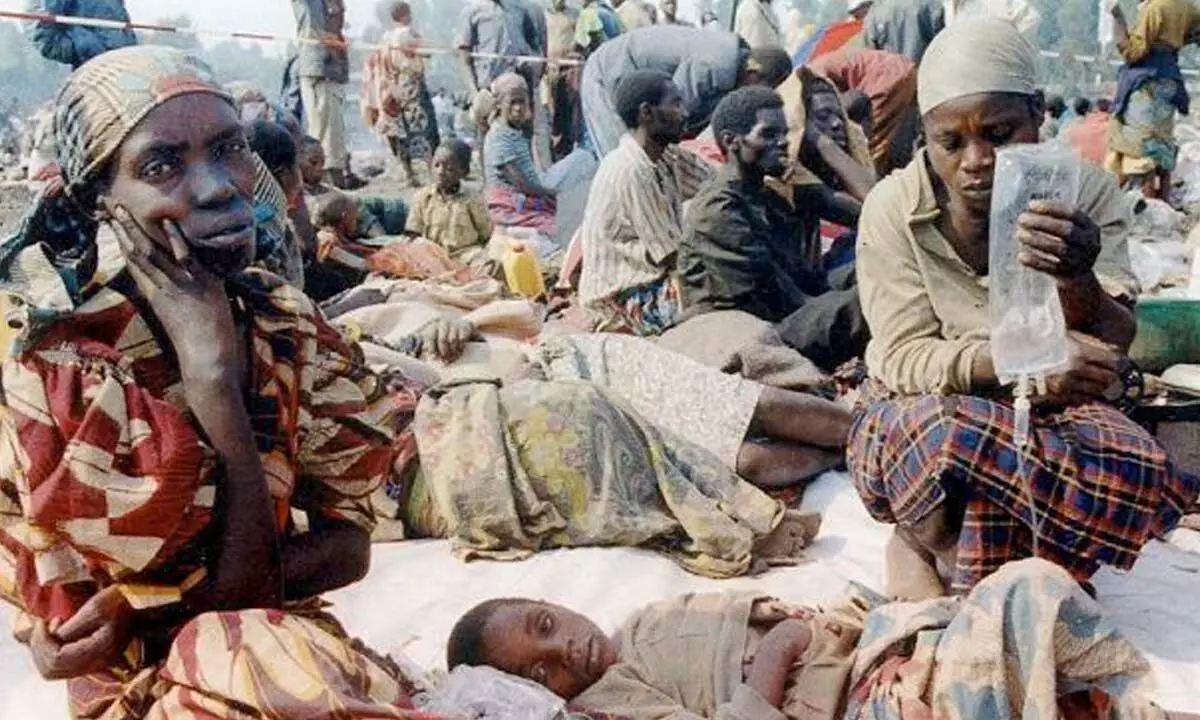Events that define 2023 as a rocky year

If 2022 was a year of uncertainty, 2023 is the year of inequality.
If 2022 was a year of uncertainty, 2023 is the year of inequality. For countries hoping to bounce back from the devastating losses of the COVID-19 pandemic, the battle has been made tougher by the compounding threats of climate change, fragility, conflict and violence, or food insecurity, to name a few – that make it difficult for economies across the board to fully recover.
These polycrises have made development work more complicated. As we end the year shifting our focus to our new mission and vision and how we can best address the concerns facing people, planet, prosperity, digital, and infrastructure, let’s look back and see how we fared in addressing some of our most pressing development concerns and priorities.
Poverty
Nearly 700 million people around the world today live in extreme poverty, meaning they live on less than $2.15 per day. Between 2010 and 2019, this number fell by 40%. Though we have made strides in global poverty reduction, those hard-won gains faced a huge setback with the COVID-19 pandemic, which brought with it not just loss of lives and devastation, but the onslaught of shocks and crises that have resulted in about three years of lost progress in poverty reduction. This means, we have lost three years in the fight against poverty.
Debt
Last year’s International Debt Report (IDR) by the World Bank highlighted rising debt-related risks for all developing economies—low as well as middle-income economies—but the strain was intensifying for the world’s poorest countries, which were squeezed by surging debt service payments. The pressure continues this year. According to this year’s IDR, developing countries spent a record $443.5 billion to service their external public and publicly guaranteed debt in 2022. The poorest countries paid a record $88.9 billion in debt-servicing costs in 2022, 4.8% more than in 2021. They face the risk of debt crises as borrowing costs surge. The increase in costs shifted scarce resources away from critical needs such as health, education, and the environment.
Gloomy Prospects
January 2023’s edition of the Global Economic Prospects report highlighted that global growth was slowing sharply in the face of elevated inflation, higher interest rates, reduced investment, and disruptions caused by Russia’s invasion of Ukraine. The global economy was projected to grow by 1.7% in 2023 and 2.7% in 2024. Forecasts in 2023 were revised down for 95% of advanced economies and nearly 70% of emerging market and developing economies. The economic outlook for developing economies darkened in 2023. As the New Year dawns, the world is at the halfway point of what was meant to be a critical decade for development. The World Bank’s upcoming Global Economic Prospects report on January 9 will provide a crucial glimpse into the challenges that lie ahead.
At current trends, the maximum long-term rate at which the global economy can grow without sparking inflation is expected to fall to a three-decade low over the remainder of the 2020s. That’s because most of the forces that have powered prosperity since the early 1990s have weakened—including a growing working-age population.
Climate Change
Climate change leaves no person and no economy unscathed. It could drive 216 million people to migrate within their own countries by 2050. It could increase water stress and cut crop yields, especially in the world’s most food-insecure regions. Agrifood systems are also responsible for one third of all emissions. Scaling up renewables and energy efficiency, and investing in electrification at scale, while avoiding new coal plant construction and retiring old ones, is critical to providing clean energy to power homes, schools, hospitals, and businesses. Reducing emissions and boosting resilience is possible, but will require significant social, economic, and technological changes.
Tackling climate change is at the heart of the development challenge and of building a livable planet. High-income countries comprise 16% of the global population, but produce 31% of GHG emissions. In terms of total greenhouse gas emission, China topped the list producing 26.4% of global greenhouse gas emissions (with 18% of global population)
Commodity Markets
According to the latest Commodity Markets Outlook report, global commodity prices declined by almost 25% in 2023 relative to 2022, the sharpest drop since the pandemic. The start of the conflict in the Middle East in early October led to an initial uptick in prices, though the impact so far has been small. Oil prices are expected to average $90 a barrel in the current quarter before declining to an average of $81 a barrel next year as global economic growth slows, and overall commodity prices are projected to fall 4.1% next year. Prices of agricultural commodities are expected to decline next year as supplies rise, and prices of base metals are also projected to drop 5% in 2024.
Gender Inequality
Around the world, nearly 2.4 billion women of working age still do not have the same rights as men. In 2022, the global average score on Women, Business and the Law (WBL) index rose just half a point to 77.1, indicating women, on average, enjoy barely 77% of the legal rights that men do. This year’s report has found that the global pace of reforms toward equal rights for women has fallen to a 20-year low, with only 34 gender-related legal reforms across 18 countries in 2022—the lowest number since 2001. At this current pace, women entering the workforce today will retire before they’re ever able to gain the same rights as their male counterparts.
Migration
About 184 million people—2.3% of the world’s population—live outside of their country of nationality, and almost half of them are in low- and middle-income countries. The World Development Report 2023 finds that better migration policies can help boost prosperity in all countries. According to this year’s report, as populations age at an unprecedented pace across the globe, countries are increasingly reliant on migration for long-term growth potential. We can use this as an opportunity to find better ways to make migration work for people and societies. Nearly half of all migrants reside in low- and middle-income economies.
Working Sans Border
Online gig work is a growing part of many labour markets, accounting for up to 12% of the global labour force. It is a growing source of income for millions of people. The demand for online gig workers is rising faster in developing countries than in industrialized countries. It also offers flexibility and potential for extra income as two important motivators. Local gig platforms play a vital role in the local labour market, but they face challenges in establishing a viable business model. Online gig work can support inclusion by providing work opportunities for youth, women and low-skilled workers. The gig economy can help governments build digital skills, increase income-earning opportunities, and expand social protection coverage of informal workers.


















